|
The Tanforan Memorial sculpture was commissioned to serve as both a memorial and a record of a historic event. It recreates in sculptural form members of a Japanese-American family who were photographed in 1942 by Dorothea Lange. The Lange photos documented families waiting for the buses at Tanforan, and the memorial committee wanted a close recreation of those family members based on the photos. For the proposal, I was invited to choose which photos and which family members might be the focus of my preliminary drawings. So this was a straight-forward assignment without much room for modification.
The purpose of the sculpture is chiefly to memorialize those who had been ordered to assemble at the Tanforan site to be incarcerated in faraway camps for the duration of WW II. Some 8000 men, women and children did so at the Tanforan site. They showed up in their Sunday best, with what remained of their worldly belongings in suitcases, and with government-issued I.D. tags at their necks. Each family was issued a number. From there they were bused to the local racetrack where they were kept for months in horse stalls while the government built the inland camps — camps that would end up housing about 120,000 innocent people. At the time I heard of this commission, I knew little about the internments, only that they’d occurred. My Canadian education and exposure to American culture didn’t illuminate this aspect of the war. So my early thoughts and drawings were inspired primarily by my basic sense of outrage upon learning the details of what happened, and sadness for the victims. Those feelings served as a kind of fuel for the commission, but it was what I learned about the subject and my conception of it that guided my work. Once I zeroed in on the specific people who I would recreate, the realness of the subject came into full focus. The two Mochida sisters stood out for me as reflecting the victims’ innocence and representing the more general subject of the innocent confronted by force. The youngest expressed the elementary response of confusion, fear, and of longing for home — as a little child would feel in that situation. But a spectacle of fear and confusion could not imply the full nature of what was being depicted. To fully understand the subject, I turned to researching the incarcerations. The accounts by former incarcerees and their families revealed life in and after the camps. A picture emerged of decent, freedom-loving people who, through no fault of their own, were violated by their government. That government was not an all out tyranny, but a fear-driven, collectivist administration that flouted individual rights in an otherwise free society. The victims did their best to bear up and looked to restoring their lives after the war. They seemed to count on America being a country in which the individual is ultimately free to flourish. They viewed what was done to them as an aberration to be endured and overcome. And they were right. They were violated in America, not Soviet Russia, not Nazi Germany, Imperialist Japan, modern China, or any other tyranny in which they would have been utterly doomed. At least in America they had a future life. Throughout their incarceration they upheld their standards of life as best they could, and after the war they reclaimed their lives and flourished. So these two children did not represent doomed, pathetic victims. Victims, yes. Pathetic? No. They had a life ahead of them in a world that they and other free people would build. The victims’ benevolence, their dignity and resolute love of their own lives — all of that had to be in this monument, not just fear and a child’s longing to go home. If the monument merely conveyed pathos, it would not be truthful. So I turned to the older girl who I thought offered more opportunity to present a resolute figure. While looking into what she did as they stood waiting for the bus, I noticed in one of the Lange photos that another child was fidgeting with her I.D. tag. I imagined that instead of absent-mindedly fiddling with the tag, the child could pull on it in a more deliberate way, as though she wanted to pull it off. That was the gesture I was looking for. I gave that to the older girl. She pulls on her tag in a calm gesture of defiance. It does not belong on her and she wants it off. She is resolute because she senses that the tag does not belong and that it will come off. She is not happy, but, importantly, she is not afraid. She lightly touches her sister's shoulder to protect and comfort her. While the youngest looks down in confusion and sadness, the older girl looks to their horizon — to their future life in freedom.
1 Comment
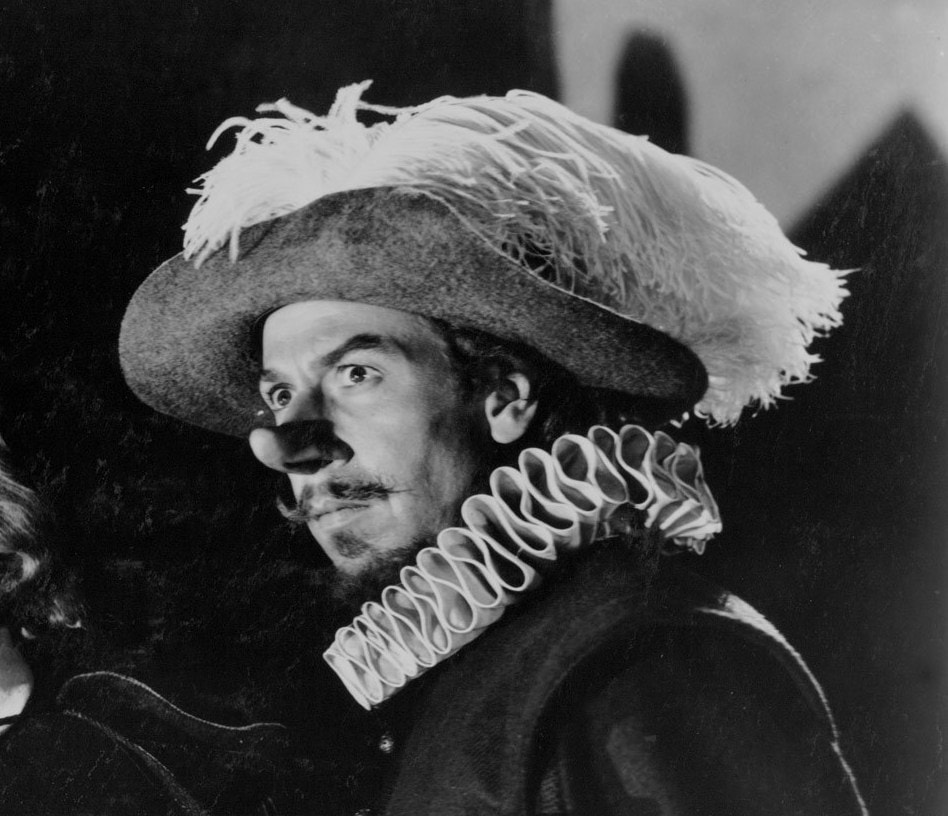 José Ferrer as Cyrano, Cyrano de Bergerac (film, 1950). Image: Stanley Kramer Productions. Public Domain. In a recent conversation with some young people — senior high / junior college age — I found myself thinking about what people are (or are not) gaining from art these days. The topic of conversation was the play Cyrano de Bergerac by Rostand. The youths had read the play and found it to be inconsequential. One described the story as “repetitive.” No one called the play outright “boring,” but their reaction to it resembled boredom — they didn’t think that the play was deeply significant or valuable to their lives. Interestingly, they were adept at analyzing technical aspects of the play — a skill they had learned at school. Since that conversation, I’ve reflected on what I’ve seen over the years of peoples’ responses to art, especially young peoples’. My main interest is visual art, painting and sculpture, but the exchange about Cyrano made me wonder about what value people are deriving from art in general. Young people are exposed to a great deal of art today yet, other than for popular music, they rarely express that a particular work of art is important or relevant to their life. The most common response I hear is awe of the technical virtuosity of a work, or interest in the subject matter (horse lovers love horse art), but silence about a deeper meaning. There may be more than one reason for this silence. An art historian once remarked to me that people often say nothing about art because they don’t know what to say. This is certainly the case in many instances, but I think peoples’ silence is also consistent with a common view today that art is not deeply — objectively — significant to life. If art has any meaning at all, that meaning is thought to be subjective — known and relevant only to the viewer apart from anything else. On that view, art might be technically interesting and even stimulating, but it has no wider, objective significance. The youths’ reaction to Cyrano is consistent with that view of art. The idea that art is subjective might account for why many focus on the technical features of art: The use of alliteration in poetry, color contrast in painting, or metaphor in literature — those can be analyzed as ends in themselves or, at best, as the means by which artists express their subjective feelings. Our art schools do not typically teach that the technical aspects of art are how art dramatizes objective facts and values. Cyrano’s plumed hat can be appreciated for its symbolism, but do our schools teach about Cyrano’s character, his courage and pride, and how the play dramatizes that? Do they teach how a hero’s story might be relevant to our lives? The youths’ experience of the play Cyrano de Bergerac as “repetitive” was particularly striking to me. Is the play truly undercut by tediously recurring features? Cyrano repeatedly challenges men to sword fights, and he shows his love for Roxanne many times. But each challenge is at a different plot point and reveals something more about the hero’s character: his contempt for mediocrity, his pride, his confidence, his sense of justice, his courage, and so on. And each variation on this expression of love reveals something more about him: his admiration for Roxanne’s intellect, his insecurity about her love for him, his protectiveness of her, and most dramatically, the depth of his love for her. Could it be that these young people did not recognize that the variations of an idea about Cyrano are not merely repeated particulars? Do they know that a hero’s character and values are being dramatized through those variations? Even if they know that, though, it might hardly matter to them, if they believe that art is subjective. Picot in His Studio at the Villa Medici, 1817, by Jean Alaux (1785-1864). Photo courtesy pubhist.com
On the homestretch of editing my art history textbook Windows on Humanity (working title). Here’s a segment that didn’t make it to the final manuscript. It was a sidebar on artistic independence and that just didn’t fit with the rest of the text. I’m 99% sure I won’t use it in the final text, so here it is. Enjoy! Artistic Independence Artistic independence is crucial to art. It is necessary for artistic growth, authenticity of artistic expression and technical excellence. The independence of the artist is specifically the artist’s freedom from coercion. It implies an environment of intellectual openness in which an artist can work in terms of their own values and knowledge, not the dictates of another. An artist who is independent can exercise those choices that are foundational to artistic creation, namely, choosing the outlook and purpose of their work. If an artist cannot determine these, they cannot create artwork that reflects their assessment of their subject, and they cannot produce work that is personally meaningful. Restrictions on the purpose and vision of the arts are typically in concert with deeper intellectual limitations that interfere with the artist’s motivation to seek out and understand the subjects of their work, and to grow their art. Historically, political and religious censure have been major factors that determined the subjects and growth (or the absence of growth) of art. For most of human history, artists have worked within the restrictions of political and religious authority. Artists did not achieve full independence until the modern age when personal expression became a leading aim in the arts. Despite the restrictions within which much art has been produced, the arts have reflected some degree of choice, even if it is simply the artist’s acceptance of the conventions of their culture. Creative independence does not preclude an artist’s reliance on the knowledge and approach of other artists, especially the work of master artists -- so long as the artist can choose which masterpiece they look to for inspiration, their art can still reflect their personal vision. Artistic independence is always in some context of knowledge and means available to the artist in a given culture. I get asked this a lot, so here’s my answer to the question, “Is photography art?” I empathize with the view that photography must be an art form because photography has obvious aesthetic features: It’s a kind of re-creation of reality, it’s a selective re-creation of reality, and the photographer’s choices can be motivated by his metaphysical outlook on life and the world — on his metaphysical value judgements. Sounds a lot like art. Then, why distinguish art (drawing, painting, sculpture) from photography? The reason is that a work of art directly reflects the mind. A photo does not. What makes an artwork art is not primarily that it’s a re-creation of something, or even that it’s a selective re-creation of something. It is that the visual features of a work of art are direct products of cognition and evaluation — by a human mind. The lines, colors, and shapes of a work of art are created and directed by the artist’s understanding and assessment of what he’s re-creating, and most broadly, his assessment of life and reality. The visual features of a photograph are produced according to a mechanical / digital process. That process is built and guided by a human being, but the lines, colors, and shapes of a photo are dictated by the input from whatever the camera is aimed at, not by a thinking, evaluating consciousness. A way to understand the importance of this distinction is to think about what makes the imagery of a work of art possible compared to that of a photo. Now I’m going to come at this issue with emphasis on cognition as the hallmark of art, not metaphysics — not the fact that art reflects a metaphysical view. The reason I’m dropping metaphysics for now is because a photographer often makes choices based on his metaphysical outlook and sense of life — his metaphysics can guide his choice of subject and of which visual features to use: what sort of lighting, composition, color, and so forth. The fact that both art and photography can reflect the creator’s metaphysics muddies the distinction. So I’m going to highlight the issue of cognition here. The visual features of a work of art are made possible by, and reflect, the artist’s understanding of reality. Those of a photo do not. Let’s take two wildly different examples of subjects and, again, ignoring the metaphysics of art and photography. If a painter re-creates an apple, the outline he draws reflects his understanding of the shape of the apple. He knows that the apple is round, that its girth is circular and that its surfaces tuck in at the axis. The colors he chooses from his palette reflect his awareness of the color of the apple in a certain lighting condition. If he is a very observant and thoughtful artist, his work will accurately reflect the structure and volume of the apple, in addition to the nature of its skin and stem. His work will also reflect what he knows about the visual upshot of that kind of structure and surface in a certain lighting condition. In contrast to the cognitive basis of art, a photo of an apple does not require that the photographer know the apple. It helps, but it’s not necessary. The photographer can ‘point and click’ and produce an image of the apple without having any knowledge of what he’s recorded. The image itself — the lights and darks, the colors, lines, and shapes — are produced by the processes of the camera in response to the conditions of activation. Granted, the photographer can anticipate a great deal and set up the conditions of the shot in order to produce a certain kind of image. This preparation can involve artistic skill and aesthetic choices. But those choices result in a photograph that has artistic elements, it does not produce a work of art. Let’s turn to a very different example: an artist painting the Crab Nebula — a subject that is remote from the artist’s direct observation. If a painter re-creates the Crab Nebula he must base it either on what he sees through a telescope, or in a photographic / digital image of the nebula. Nonetheless, his painting will reflect what he understands or does not understand about the Crab Nebula, not just what colors or shapes he notices. If he knows that he is observing star dust, and understands at all what star dust is, he will use his paint to dramatize the diaphanous quality of the star clouds. If he is ignorant about star dust, he might produce what appears to be a solid form. What ends up on the canvas is determined by the artist’s success or failure to know his subject. Now in contrast to the painter, a photographer who captures the Crab Nebula doesn’t need to know what a nebula is, or grasp its structure, or know the cause of its shape. He need only know where to direct his camera and adjust its mechanisms to record what he can of the nebula. Despite his ignorance of the nebula, his photograph could end up being very beautiful and even include aesthetic touches, like a selective enhancement of color or brightness to give the image more clarity or vividness. Hypothetically, a photographer could intend to dramatize the broiling energy of the nebula, and evoke a sense of movement in an otherwise still subject. That would be an aesthetic goal and effect. But increasing the saturation of the colors is a modification of what is already there: a device’s visual record of the nebula. The distinction is clear between art and photography: Art reflects the artist’s knowledge of reality; photography records the input that is made available to the camera. In the case of the apple, the curving direction of the artist’s outline is guided by the artist’s understanding of the apple’s structure. In the case of the nebula painting, the diaphanous clouds and the expanding flare of light dramatized in paint are made possible by the artist’s grasp of the nature of a nebula. But what the camera produces does not reflect that kind of understanding or assessment. The features of the photographic image are not created by the photographer, but by the mechanism’s output according to certain input in certain conditions. The photographer modifies the input, the artist re-creates the observed and understood. That said, much of photography is beautiful and shares with the arts aesthetic features. Photographers today have very sophisticated ways of setting up their works to reflect their vision of what could be. And they have great ability to modify their photos to reflect aesthetic choices. Distinguishing photography from art is not to discredit photography, or to deny it aesthetic meaning, it is to identify both art and photography according to what they each are. In the end, the photographer’s image is a product of a mechanical / chemical / or digital recording. The artist’s image is a product of cognition-based re-creation. Artist rendering of the "Vessel." Image courtesy of Related-Oxford.
I’ll be visiting New York City soon and have learned that a monumental sculpture is slated to be installed near the Hudson River there. The “Vessel” will be a 150-foot-tall honeycomb construct of stairways. The ambitious $150 million complex will have 154 interconnecting flights of stairs that people can walk on — a tall order for the visiting art-lover who seeks an aesthetic experience. The elderly and disabled will need to stand aside for this one. The Vessel is considered by all to be a work of art, specifically a sculpture, and likely this classification will go unquestioned. But despite the consensus, the Vessel remains a staircase, not a work of art — a big, unusually designed staircase, but a staircase nonetheless. Why do people believe that the Vessel will be a work of art? It has no utilitarian purpose in keeping with staircases and is meant to be experienced as an end in itself. Is that what distinguishes the Vessel as art? A cat doesn’t serve a utilitarian purpose and is meant to be experienced as an end in itself, but it’s not a work of art, it’s a pet. What makes the Vessel art, according to the designer? Thomas Heatherwick says that an important feature of the Vessel is that people walking on it will see each other (as well as the surroundings, I assume). Perhaps the opportunity to see others is the key element that he thinks places the Vessel in the category of art. But random strangers see each other all the time in New York, and no one equates that with an aesthetic encounter. Perhaps we just don’t get enough of each other. But what if someone claims that climbing up on the Vessel and seeing others is a metaphysical experience? What if the designer claims that the Vessel reflects his metaphysical outlook that, say, man is a social being who is part of an inter-related cosmos, and interacting with the Vessel and all those who join in, dramatizes an elevated state of human potential? (I just made that up, but that could fly in the press.) The answer is that one can attribute metaphysical significance to a lot of things. The Swiss Alps evoke a sense of exalted possibility; a dank basement can bring to mind a realm of the futile. But the Alps are mountains; a basement is part of a building. Neither are works of art. Having metaphysical significance is not sufficient to distinguish something as a work of art. Art is distinguished by being a re-creation of something that the artist has observed in reality and understood: a human figure, a tree, an animal, a vista etc., and such that the re-creation dramatizes the artist’s outlook on life and the world. The Vessel isn’t that. The Vessel can be firmly classified as an architectural structure. That’s not to demote it. It’s simply to identify the Vessel with other architectural structures like the Gateway Arch of St. Louis, which is a lovely arch, not a sculpture. Claiming that a staircase is a sculpture denies that art is something. If a staircase is art, then art has no identity that distinguishes it from anything else. If art can be anything, then it is no thing — nothing. During a Q & A at my talk on Visual Art recently, someone asked about computer art — is it art? The question probes the deeper issue of what art is and what constitute legitimate categories of art. Digital media was invented long after drawing, painting and sculpture were established, digital imagery continues to evolve, and the capacity for creating visual products by means of computers is growing. Given all this, my questioner speculated that the means would eventually be available for creating precision digital products — images and three-dimensional forms — that reflect a designer’s artistic vision. Would those digital products be art? I think that my effort to answer this was inadequate, so I’ll take a stab at it here, this time using a hypothetical situation that I think is consistent with the concern about future digital products ranking with established fine art media. Let’s say that in the future it will be possible for a designer / engineer to use a computer such that his design input by keyboard (or tablet or other device) can instruct machines to output some digital image or object that reflects his design idea — the design that he conceived “in his mind’s eye” so-to-speak. And let’s say even that the product is in a form that we don’t yet know, and that it could be as far beyond our imagination as the hologram would be to Renaissance artists. I’d say that if the product reflects the individual creator’s design, then it would be art. The issue that this futurist example addresses is that the artist’s tools or instruments do not determine whether a product is a work of art. How an artist renders a work of visual art can vary. I must qualify this, though, because it’s easy to misidentify art. And it’s much easier today to miscategorize art than ever before because the popular view today is that art is not definable. Qualifiers for distinguishing computer / digital art as fine art, in company with drawing, painting and sculpture, include the following: the work must re-create something in reality based on the artist’s first-hand (perceptual) observation of things; it must reflect the artist’s assessment or outlook about life and the world; and the artist’s modification or stylization of the visuals must also reflect his outlook, not merely reflect the character of the media or the programming guidance of another person (say an engineer). This means that the digital equivalent of a Spirograph drawing, however sophisticated it might be, does not constitute art. The nature of the lines produced by a Spirograph are dictated by the tools involved. The tools are chosen and the person pushes the tools, but the drawing that results is a product of the structures of the instrument. A Spirograph drawing is not fine art. If in the end the product resembles a drawing, painting or sculpture, I’d say that it might just be a digital workaround aimed at replacing art, and I’d question the motive for doing that, particularly in an age that is largely indifferent to fine art. I’d also want to know if the product is in fact an original creation, not essentially a copy of an artwork. If the artist renders an image or object by hand, then processes it digitally to produce what amounts to a re-creation of the artwork input, that re-creation is a facsimile of art, not art. There’s also the related issue of the trend in our culture away from the individual’s observation and understanding of the physical world. Departures from cognition are evident throughout the arts today. In concert with this, the rise of digital imagery, though a great benefit in the realm of technology, is being used to substitute art, or to serve as a distraction from art. "Interior of a Church" by Emanuel de Witte. c. 1680. Collection: Cleveland Museum of Art. Image courtesy of Wikimedia Commons.
Realistic art is sometimes called “illusionist” or “illusionism.”* The term “illusionist” is often used to identify art that aims to re-create reality, but the term also implies that such art presents an illusion. Take the example of a painting that shows an interior of a room receding in the distance. According to the illusionist view of art, this kind of painting is thought to create an illusion of three-dimensional space where none exists — an attempt to lead the viewer to think that there’s a space within the picture frame where there is no such space. The term “illusion” emphasizes the intent to represent something that does not exist: The viewer sees what appears to be a three-dimensional space, where he knows (or the artist knows) there is none — only a flat, two-dimensional canvas. The same charge of illusionism is applied to paintings of physical objects that accurately show the three-dimensional solidness of an object — an apple that looks like a solid orb resting on a surface, for instance, where we know there is no such apple, only paint on canvas. “Illusionism” is also more narrowly applied to artworks that in some way use the space that the viewer occupies, or that seem to share the viewer’s space, such as a painting of a figure that seems to reach out to the viewer. This latter use of the term needs to be reconsidered, and perhaps abandoned. According to this use of the term, all art that accurately shows a spacial, three-dimensional world is illusionistic; and certainly all of sculpture could be deemed illusionistic. More broadly, I think that the term “illusion” is misapplied to realistic art. Artworks do not aim to present illusions and artists are not illusionists. Art aims to re-create reality based on the artist’s observation of reality, and according to the artist’s outlook (on reality). It is not an attempt to trick the viewer into thinking that what the artist re-creates exists within the picture frame (an actual corridor or an apple). It is an attempt to re-create, or represent, some aspect of reality in a way that dramatizes the artist’s assessment of reality. The artist’s reliance on what he observes is basic to his grasp of, and assessment of, existence. It is not a ploy to impress or trick the viewer. There is a type of art that is explicitly aimed at illusionism. That type of art is called “trompe l’oeil” (French for “deceives the eye”), and it was popular in the 17th and 18th centuries. Arguably, trompe l’oeil art aims at impressing or tricking the viewer into believing that something exists where it does not. That is a legitimate use of the term that distinguishes art that intends to impress or trick the viewer in some way. But to conflate realist art per se with illusionism denies the basis and purpose of art. * https://en.wikipedia.org/wiki/Illusionism_(art) At the OCON2016 art show I received some welcome advice on blogging. That advice was basically: Don’t write about new topics or perspectives that you’re exploring — you’ll get bogged down. Blog about things you already know, but that a lot of readers likely don’t know. That way, the writing will flow more easily and you’ll blog more. Well, okay. A long-standing bit of knowledge (for me) is how to think about a work of art in order to get the most out of it. When we look at a work of art — a painting, sculpture, or drawing — we can ask ourselves a few key questions. If it depicts a human figure, we can ask ourselves, “What kind of being is this?” “Is this being healthy or unwell, able or infirm, alert or comatose, flourishing or suffering?” Those sorts of questions address the view of human nature that the artwork dramatizes. That view is, of course, the artist’s view — the view that inspired the work, that guided the artist during the creative process, and that the work, therefore, reflects. There are other questions that address other ideas embodied in art, but I’ll leave those for another time. Questions like the one above “open up the metaphysics” of a work of art for us — they deal with the most profound meaning of a work of art. The metaphysics embodied in an artwork reflects the artist’s outlook about the world as such, about human beings as such, and about what sort of life is possible to human beings. Those are the grand-scale ideas that motivate the artist and that we, in turn, can contemplate when we view art. The metaphysics is more profound in scope than the subject, and even the theme of the artwork. The subject is what the artwork depicts. An example of subject is the depiction of a girl examining how water runs through her fingers. The theme is the general idea that the work dramatizes, and it can vary in profundity. An example of theme might be: the joy of discovery, or the joy of being alive. The metaphysics is the underlying world view implied by the work. In the case of a painting of a girl examining water, the metaphysics could be: Man is able to thrive in a knowable world. The distinction between theme and metaphysics also came up during the OCON2016 art show. A visitor to the exhibit told me that he uses narrative to help young people engage with art and derive personal meaning from it. I think this is a wonderful approach, and one that would be especially effective for young people. But adults need to access the metaphysics of art, for it is the most deeply conceptual of what art offers us. I suggested that he find a way to take his method a step further for adults, to not only elicit their awareness of the thematic ideas that art presents, which draws them toward a more conceptual experience, but to spark awareness of the metaphysics of art, which is the most conceptual experience they can have with art. A quick sketch of David at the Accademia, Florence Friday before last. David's well lit, but he could do without the directed light they've aimed into his eyes. Michelangelo carved David's deep-set eyes so that the upper part of the irises would be cast in shadow. Directing a light into the eyes counters that effect and gives David a dazzled look. Other than this issue, his lighting is perfect. Many remark on David's large hands. The enlargement of the hands relative to other body parts dramatizes David's ability to defeat Goliath -- which he achieved, according to myth, with only a sling-shot. His hands are therefore very important and the emphasis of their size is consistent with an artist's goal to dramatize their strength and to direct our attention to them. I've noticed that photographs tend to capture the emphatic proportions in a way that makes them appear overdone. Michelangelo would not have known how his work would look in a photographic image. Seeing David at the Accademia, I personally don't find the emphasis of the hands to be overdone. A reason for why Michelangelo can stylize the figure in that way is because of how we perceive a colossal scale figure. When we look at a colossus -- in reality, not via a photograph -- we look at one part of the figure and then another, and we continually "rove" our eyes across the figure, bringing together what we perceive. We don't "see" the figure the way a camera does -- in one glance that captures all parts at once. A related issue is addressed by David's large head -- large relative to the rest of his figure. David was originally intended to be mounted up high which would have greatly foreshortened the figure for the viewer on the ground. Even while he is on the base on which he is set currently, David's head is foreshortened, and its size "looks right" when viewed from the floor of the Accademia. Seeing David in photographs is no substitute for seeing him "in the marble" at the Accademia. Modern interest in David's body proportions can distract viewers from what is most important about David, which is that he is a rare colossus that successfully embodies a vision of human grandeur. |
Sandra J. Shaw
Sculptor. Art instructor Archives
September 2022
Categories |
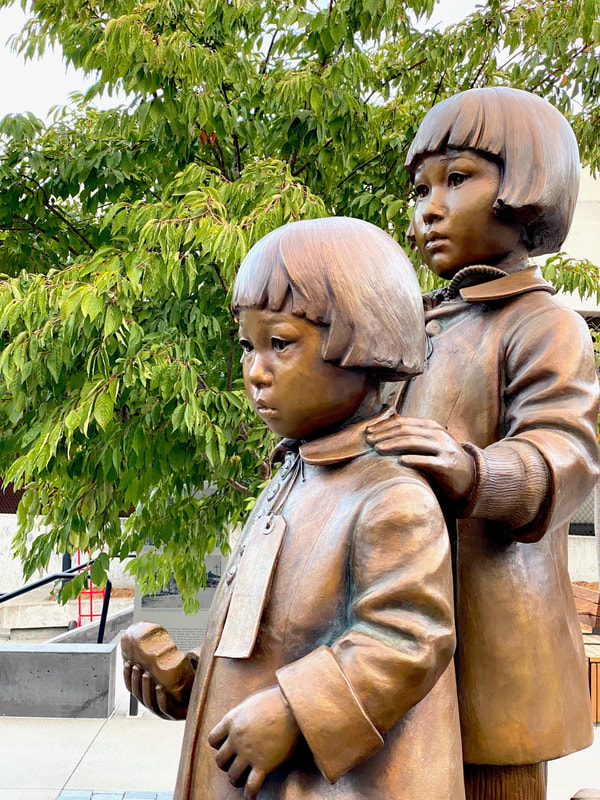

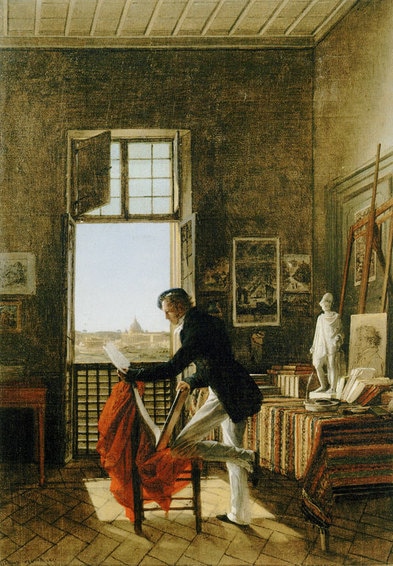
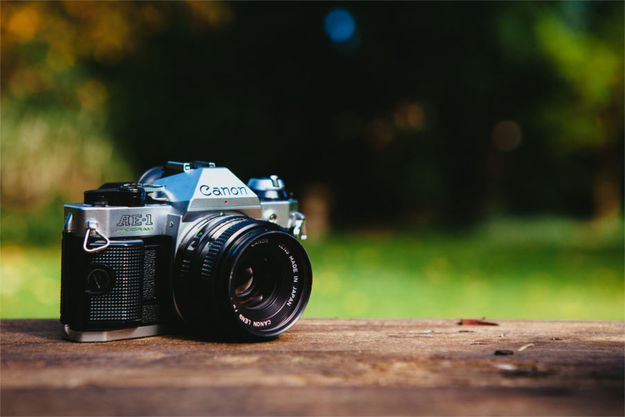

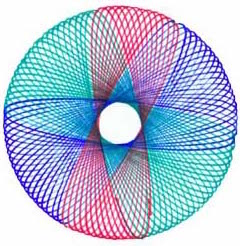
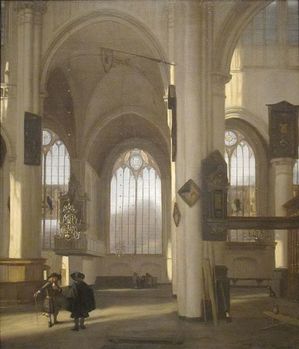
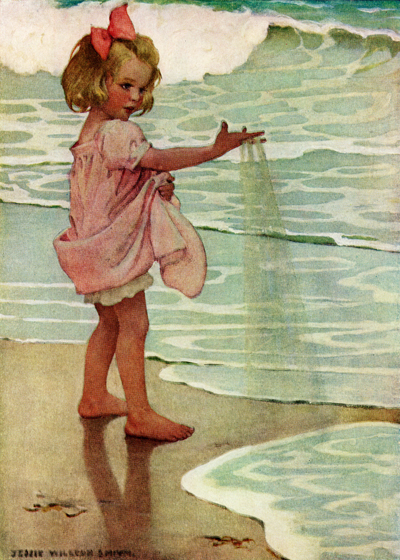
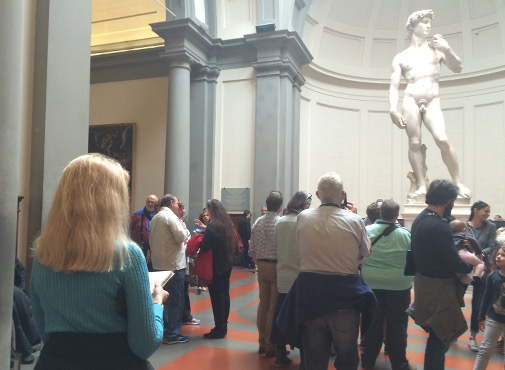

 RSS Feed
RSS Feed